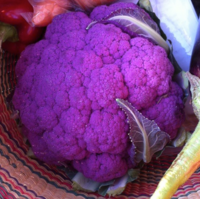
Photo from wikipedia
BackgroundRice husk and rice straw represent promising sources of biomass for production of renewable fuels and chemicals. For efficient utilisation, lignocellulosic components must first be pretreated to enable efficient enzymatic… Click to show full abstract
BackgroundRice husk and rice straw represent promising sources of biomass for production of renewable fuels and chemicals. For efficient utilisation, lignocellulosic components must first be pretreated to enable efficient enzymatic saccharification and subsequent fermentation. Existing pretreatments create breakdown products such as sugar-derived furans, and lignin-derived phenolics that inhibit enzymes and fermenting organisms. Alkali pretreatments have also been shown to release significant levels of simple, free phenolics such as ferulic acid that are normally esterified to cell wall polysaccharides in the intact plant. These phenolics have recently been found to have considerable inhibitory properties. The aim of this research has been to establish the extent to which such free phenolic acids are also released during hydrothermal pretreatment of rice straw (RS) and rice husk (RH).ResultsRS and RH were subjected to hydrothermal pretreatments over a wide range of severities (1.57–5.45). FTIR analysis showed that the pretreatments hydrolysed and solubilised hemicellulosic moieties, leading to an enrichment of lignin and crystalline cellulose in the insoluble residue. The residues also lost the capacity for UV autofluorescence at pH 7 or pH 10, indicating the breakdown or release of cell wall phenolics. Saponification of raw RS and RH enabled identification and quantification of substantial levels of simple phenolics including ferulic acid (tFA), coumaric acid (pCA) and several diferulic acids (DiFAs) including 8-O-4′-DiFA, 8,5′-DiFA and 5,5′-DiFA. RH had higher levels of pCA and lower levels of tFA and DiFAs compared with RS. Assessment of the pretreatment liquors revealed that pretreatment-liberated phenolics present were not free but remained as phenolic esters (at mM concentrations) that could be readily freed by saponification. Many were lost, presumably through degradation, at the higher severities.ConclusionDifferences in lignin, tFA, DiFAs and pCA between RS and RH reflect differences in cell wall physiology, and probably contribute to the higher recalcitrance of RH compared with RS. Hydrothermal pretreatments, unlike alkali pretreatments, release cinnamic acid components as esters. The potential for pretreatment-liberated phenolic esters to be inhibitory to fermenting microorganisms is not known. However, the present study shows that they are found at concentrations that could be significantly inhibitory if released as free forms by enzyme activity.
Journal Title: Biotechnology for Biofuels
Year Published: 2018
Link to full text (if available)
Share on Social Media: Sign Up to like & get
recommendations!